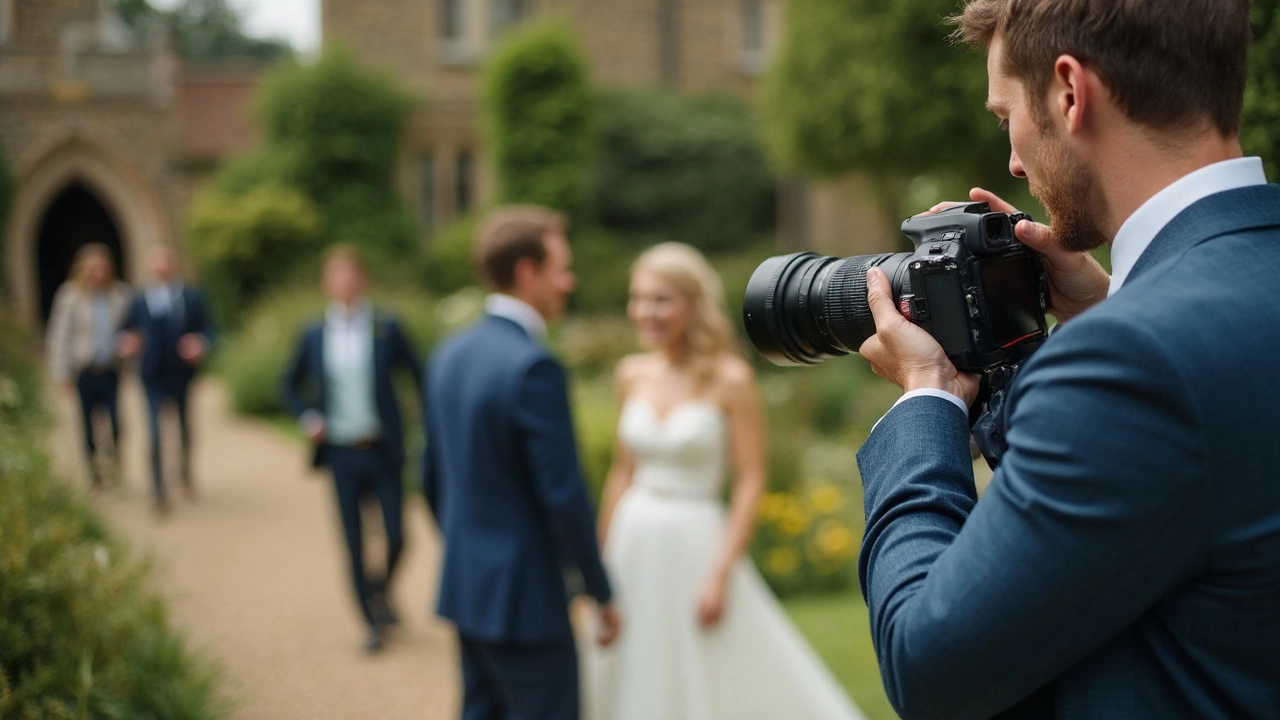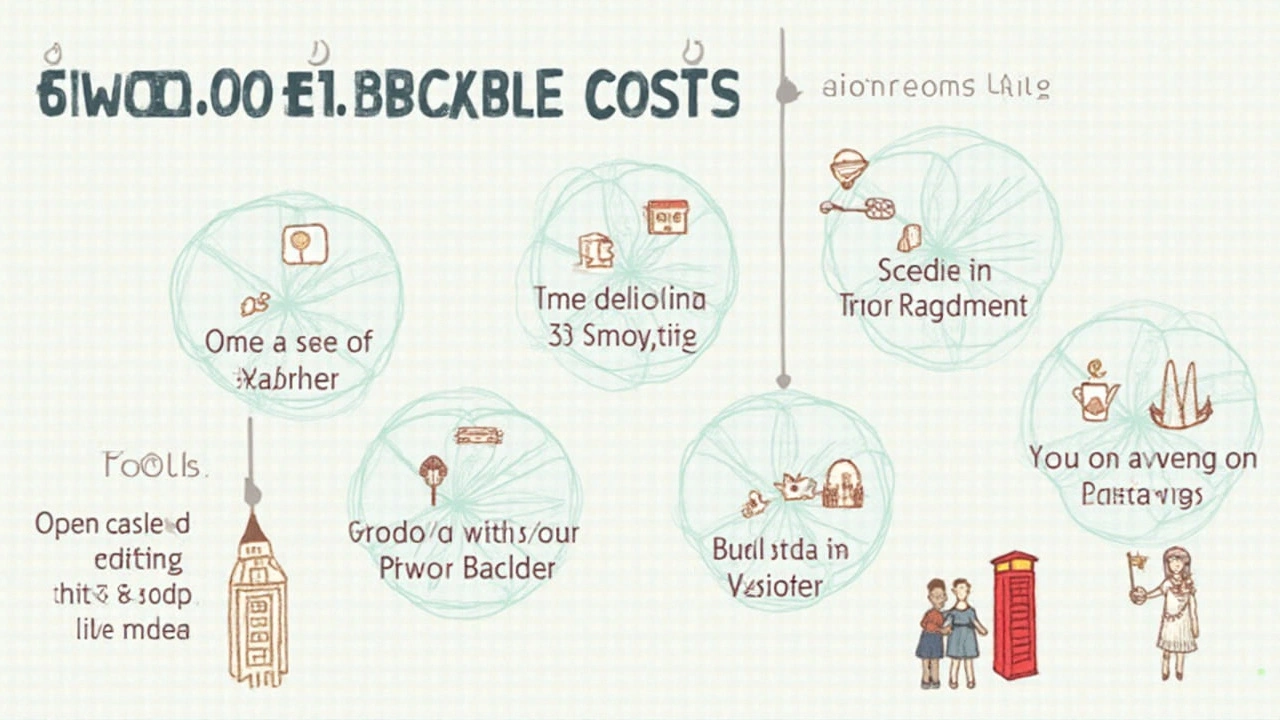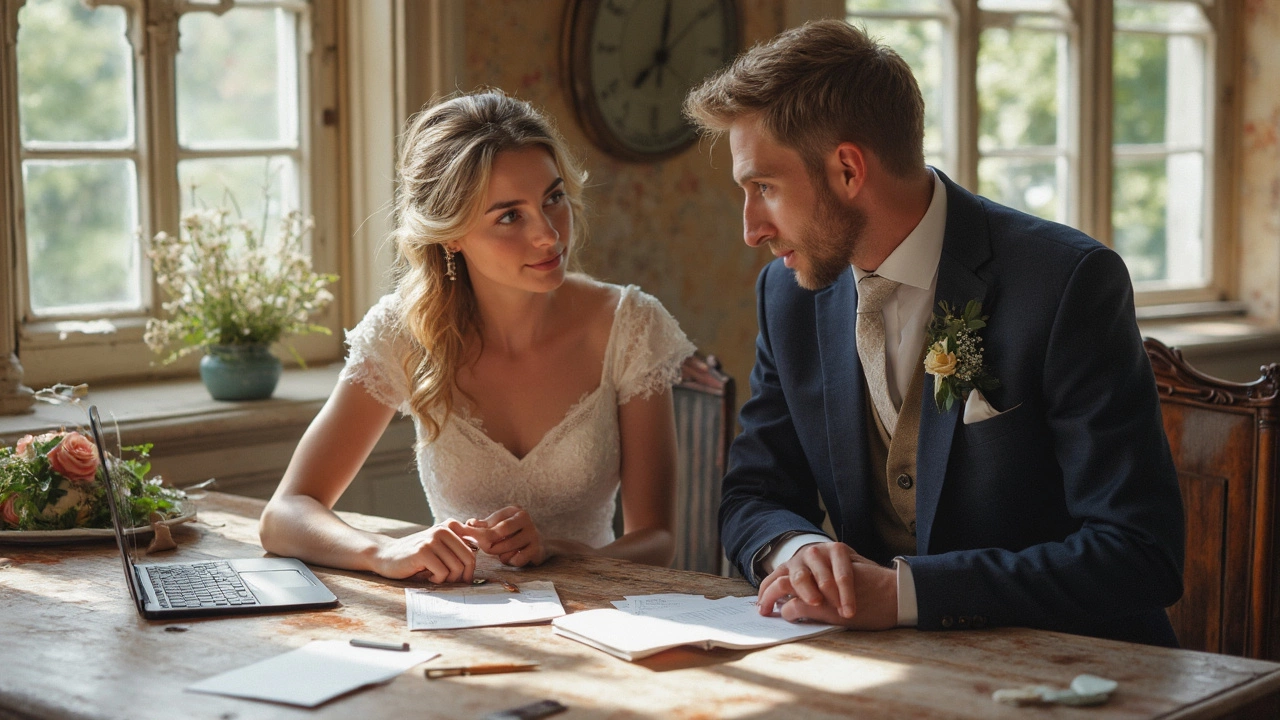So, you've stared at those perfectly filtered Instagram wedding shots and thought, "Wait — people really pay $3,000 (or more) for someone to snap photos for a single day?" It's one of those things that makes you stop mid-scroll. With venues, dresses, food, and every other wedding expense stacking up, it's totally fair to question if three grand for a photographer is reasonable, unnecessary, or just wedding-industry madness.
Stick around. There’s more to this price tag than meets the eye. You might be surprised by what you’re actually getting when you invest this much — and what you might miss out on if you decide to cut corners.
What Are You Really Paying For?
When you hear "$3,000 wedding photographer," it’s easy to picture someone showing up in a button-down, snapping a few hundred photos, and heading out with your checks in their camera bag. Not quite. Wedding photographers wear about twenty hats. They’re your directors, lighting techs, timeline keepers, counselors, crowd wranglers, and sometimes even button-fixers and makeup helpers. That fee isn’t just for pressing a shutter button.
Let’s talk about time. The wedding itself may be eight hours, but the photographer’s job starts months before and finishes weeks (sometimes months) after. They consult with you to learn your style, scout locations, build shot lists, and help you plan that first-look reveal. On the day, they’re hustling nonstop, capturing everything from teary-eyed parents to cake-smashing chaos, often without a moment to sit down.
The real grind starts after you leave your reception dancing. The editing process can eat up 30-40 hours per wedding, easy. Weaving through thousands of raw images, correcting lighting, smoothing skin, cloning out distractions, and turning "okay" moments into wall-worthy memories — this takes skill, a sharp eye, and endless patience. One recent survey found that the "average" wedding photographer spends about 60-70 hours per event (shooting, traveling, editing, emailing, album design included). That’s nearly two full-time weeks for one day’s worth of pictures.
There’s also the gear. A reliable pro shows up with at least two to three camera bodies, a handful of fast lenses, backup cards, lighting equipment, batteries, and probably insurance worth more than you spent on your dress. High-end gear costs a fortune — even a mid-level body runs upward of $2,000 each, and pros update theirs every couple of years to keep up with changing tech and client expectations. But don't forget about the software, computers, archiving hardware, website, online gallery subscriptions, and legal business stuff (contracts, liability, you name it).
| Expense | Avg. Cost (USD) |
|---|---|
| Camera Bodies (x2-3) | $6,000-$9,000 |
| Lenses (x4-5) | $4,000-$8,000 |
| Editing Software | $300/year |
| Online Gallery & Website | $500/year |
| Insurance, Licenses | $800/year |
| Backup, Storage | $1,500/year |
Let’s not even get started on the hidden costs, like driving across your city for engagement shoots, parking and mileage, grabbing you snacks and water during portraits, or backing up triple copies of every image for safety.
So, that 3k price tag doesn’t just cover "photos" — it’s their skill, years of learning, gear (and backups), endless editing, liability protection, and the priceless peace of mind that they’ll nail it if anything goes wrong. When you break it down hourly, many wedding photographers earn about the same as — or less than — your average plumber, computer repair tech, or wedding DJ. Except your tech won’t fly to your honeymoon with an external drive in case your hard drive fails, but a wedding photographer might.

How Does ,000 Stack Up in 2025?
If you’ve checked out real-world wedding forums or recent industry reports, you’ve probably noticed wedding photography prices trending upward — not down. According to The Knot’s 2024 Real Weddings Study, couples in the U.S. spent an average of about $2,900 for wedding photography in 2024, and prices have risen slightly for 2025, especially in major cities like New York, Los Angeles, Chicago, and Seattle, where $3,000–$4,000 is about mid-range now. In places like the Midwest or the South, you might still find options under $2,000, but those usually come with less experience, shorter coverage, or fewer extras.
Location, season, and time of week matter. A Saturday in June will almost always cost more than a Friday in November. Popular photographers book up 12-18 months out — and they don’t have unlimited Saturdays. The best ones can handpick clients who fit their style, so their prices reflect that demand.
Another pricing factor: experience. Photographers who’ve shot 100+ weddings bring a bulletproof calm to chaos, know the shot lists by heart, and can improvise when it pours during your beach ceremony. They’re more likely to charge above $3k — and be worth every penny. Up-and-comers might charge $1,000-$2,000, but with more risk: sometimes the results are amazing, sometimes not so much. It’s a classic you-get-what-you-pay-for story.
What do you actually get for $3,000 these days? Typically, you’ll receive 8-10 hours of coverage, hundreds of edited, high-res photos, an online gallery, a second shooter (for big events), and a print release. Some packages toss in extras: engagement sessions, print credits, or small albums. Top-tier pros might charge more, but you get more personalized attention and quicker delivery.
| Package Feature | Under $2,000 | About $3,000 | $5,000+ |
|---|---|---|---|
| Coverage Hours | 4-6 | 8-10 | 10-12+ |
| Images Delivered | 300-500 | 700-1,000+ | 1,000-1,500+ |
| Second Shooter | Rare | Often Included | Always Included |
| Engagement Shoot | Sometimes | Usually | Always |
| Albums/Prints | No or basic | Small/credit | Premium, multiple |
| Turnaround Time | 8-12 weeks | 4-8 weeks | 2-4 weeks |
There are wildcards, of course. TikTok is full of couples who’ve booked friends, up-and-coming content creators, or DIYed it for half the price — sometimes with wonderful results, sometimes with horror stories. You’ll find urban legends from both sides: someone’s uncle nailed the vibe with a $300 Craigslist camera and someone’s "high-end" pick missed the vows entirely. But when the average cost for flowers is now $2,400 and a DJ charges about $1,800, investing $3,000 into lasting memories doesn’t sound so off-base anymore.
Here's one thing that sticks with couples years later: the food and music fade into memory, but photos get hung in living rooms, shared at anniversaries, and flipped through by future kids. If you’re going to splurge somewhere, it’s hard to regret doing it on the only thing that lasts.

How to Tell If ,000 Is the Right Number for YOU
So, is three grand "too much"? That number only makes sense in context: your budget, your expectations, and your trust in the person behind the camera. Not everyone needs to spend that much, and there are ways to pay less (or more) without regret. But cutting corners without care can leave you wishing you’d done things differently, and you can bet you’ll be hearing about it every time you pull out your album.
First, get real with your priorities. If you dream of magazine-worthy, Pinterest-ready images, don’t expect to land them with a $500 budget. If you’re fine with a handful of simple snapshots, there’s nothing wrong with booking a student or hobbyist, just set your expectations accordingly.
The next step? Do your homework (yep, more than stalking Instagram). Talk to friends who recently tied the knot — ask what they paid, what was worth it, and if they have any regrets. Most couples say they wish they’d budgeted more for photos, not less; it’s one of the big "if I could do it over, I’d…" admissions.
Dig into portfolios, not just highlight reels. Any photographer can display fifteen gorgeous shots from fifty weddings, but what does a full album look like? Ask to see three full galleries from real weddings, start to finish. You’ll spot consistency, style, and whether they can handle any lighting disaster you throw at them.
When you meet photographers, pay attention to how they listen. Are they interested in what matters to you? Do they offer advice about the timeline, photo lists, or what lighting works best at your venue? The best pros are collaborators, not just performers. You’ll want someone whose personality meshes with yours since they’ll be by your side all day, sometimes more than your own family.
- Ask what’s included: hours, number of photos, turnaround time, backups, albums, rights to print and share, and a contingency plan if they get sick or equipment fails.
- Request the contract and read it — cover to cover. You want guarantees for when your photos will be delivered, how many images you get, and what happens if something goes wrong.
- Get a shortlist. Compare apples to apples: what’s included, the style, the vibe, and the gut feeling you get. In wedding world, gut feelings matter.
- If $3,000 is stretching your budget, ask about shorter coverage, off-season dates, or building a custom package. Many photographers offer payment plans (especially as inflation squeezes everyone’s budget in 2025).
- If you love a photographer but can’t swing it, see if you can skip the engagement shoot or album and add those later. Or ask if they’ll match you with a trusted associate shooter.
The last thing you want is to look through your wedding album for decades and see blurry, missed moments or feel like everyone looks awkward because your photographer couldn’t wrangle kids, grandparents, or the unpredictable weather. Cutting costs is tempting, but missing memories are a lot harder to fix than a slightly smaller cake.
If you’re spending thousands on your celebration, three grand for memories you’ll treasure for a lifetime might not seem so wild. The best advice? Pick the person whose photos and personality you love, whose business feels solid, and whose approach puts you at ease. When it comes down to it, peace of mind — knowing you’ll have real, beautiful photos to remember your once-in-a-lifetime day — is kind of priceless.

